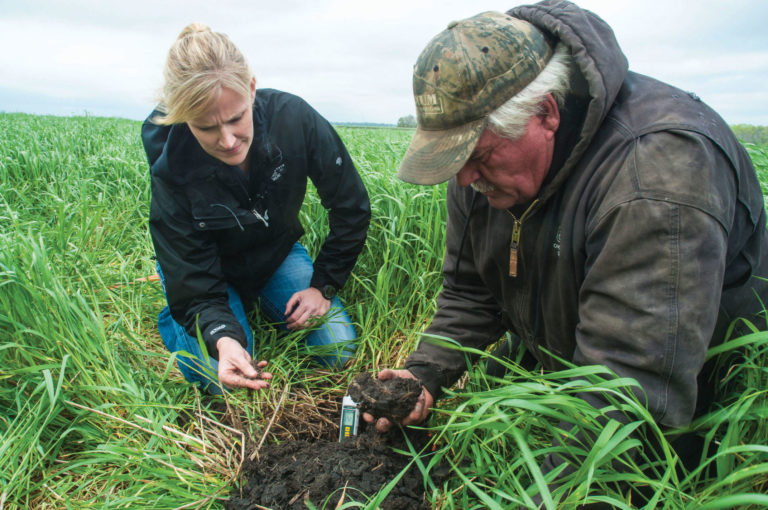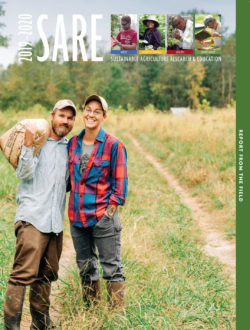"We are building a soil health network of farmers, scientists, consultants, state organizations, industry and Extension."
Abbey Wick, North Dakota State University
THE CHALLENGE
The practice of planting a cover crop holds many opportunities for farmers. Cover crops can build soil health, curb erosion, control weeds, improve water and nutrient management, and increase the bottom line. In North Dakota, they have the potential to reduce soil salinity by using excess water, which is a problem on hundreds of thousands of acres. Cover crop acreage increased 50% nationwide from 2012 to 2017, according to the Census of Agriculture, yet North Dakota farmers lag behind their Midwestern neighbors in adoption. This lag is largely due to limited local knowledge about how to fit cover crops into a short growing season.
THE ACTIONS TAKEN

North Dakota State University Soil Health Specialist Abbey Wick used a 2015 SARE Partnership grant to partner with producers in the Red River Valley, where salinity is widespread, to establish replicated plots of cover crops and monitor their performance over two years. The team planted a basic mix of cereal rye, radishes and turnips, plus other mixes that built on that combination. The goal was to learn how various cover crops perform in North Dakota, thereby giving farmers a range of options to meet their particular needs.
Wick received a second SARE Partnership grant in 2017 to evaluate some of the longer-term changes to soil health that cover crops cause and to address emerging interests from her farmer partners. In particular, they wanted to explore the practice of “planting green,” or seeding a cash crop such as corn or soybeans into a standing cover crop in the spring. Planting green extends the amount of time a cover crop can grow and provide its benefits.
THE IMPACTS
While varying weather conditions led to mixed results across field locations, treatments and years, Wick’s team is well on their way to accomplishing their primary goal: to create and share a body of knowledge about cover crops in North Dakota. Impacts include:
- Expansive outreach: Through dozens of workshops, tours, articles and videos, each project reached 2,000 farmers and more than 300 professionals with cover crop information. More than 1,100 farmers reported learning something new.
- Adopting new practices: According to project surveys, 275 farmers changed or adopted a production practice based on this outreach.
- New information: The team has begun to discover useful information about managing cover crops. For example, they demonstrated that cover crops can control weeds and maintain consistent soybean yields, and weather challenges have helped them home in on the optimal time for seeding cover crops in North Dakota.
Visit the database of project reports to learn more about these SARE-funded projects: ONC15-012 ONC17-036.
